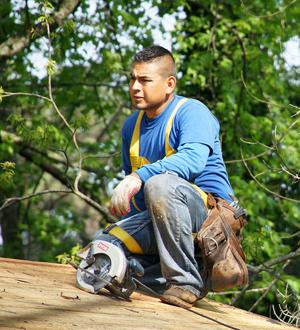The HSE have released a new publication, Health and Safety in Roof Work, which is about the risks involved in working at height. They have updated their guidance because working on a roof is one of the most dangerous areas for building contractors, with roofers making up almost one quarter of all deaths from falling from height when working.
One particular area of concern that the Health and Safety Executive (HSE) wanted to highlight was that there are aspects of roof work which are not typically identified as roof work. These include maintenance work and surveying, and if the work is not correctly labelled as roof work, the existing safety guidelines are less likely to be followed, with potentially devastating results.
Health and Safety in Roof Work is intended to help workers to recognise the most common causes of injury and death when working at height on roofs. It also aims to teach workers to instigate the correct measures to minimise the risk of accident and injury in this type of work. This does not simply cover the threat of falling, it also looks at other relevant issues such as manual handling, noise, vibration and the different types of dust and chemicals that might be used.

All of the various types of roof work are covered in the publication, including working on new buildings, maintenance and cleaning, and demolition and repair work.
The book details the main causes of accidents amongst people who work at height, including not just the height itself but also the fragile or dangerous materials which roof work can involve, such as asbestos or roof lights. As well as explaining the dangers, the book also outlines the most up to date information available about how these risks can be minimised, prevented or controlled.
The publication normally costs £17.50 but is available as a free download from the Health and Safety Executive website.
Other techniques which can make a difference to the safety of construction workers working at height include having an effective and efficient visitor management system in place.
Ensuring that each contractor working on a site signs in and has a visible indicator, such as an ID card or Visitor Pass, can help to make sure that only people who are supposed to be on the site are there. In addition, the ID cards and passes themselves can contain information about what aspects of work an individual is trained and competent to do. This can include a section on working at height: if a contractor's identification or computerised registration and sign-in states that they have undergone the correct training and have adequate experience at working at height, this will help to keep everybody in the vicinity safe.
(Photo Credit: JD Harvill)